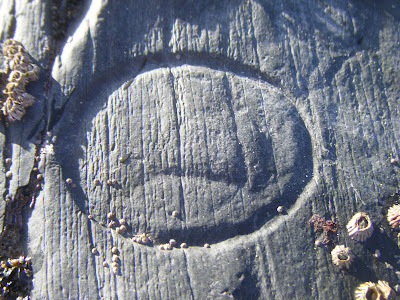 |
| Mayfly |
It has been a a mild winter here in Ireland, especially considering the arctic conditions of two and three years ago. It is therefore not unusual to see a few strange phenological events occurring, such as plants in full flower and moths on the wing. One of the oddest, yet most delightful that I have seen recently is most certainly an adult mayfly, on the wing, not eleven days ago some 17 km from Cork city. It was odd because, as the name suggests, mayflies tend to emerge around May. Yet the emergence period for some species can from March to October. Still, seeing one a little over a week from Christmas was a little peculiar.
This sighting is also of interest as it brings to mind the recently published Red List of Irish Ephemoptera (1), detailing a check-list of the Irish species and their conservation status. Ireland is home to 33 species of mayfly, quite a low number in comparison to that of mainland Europe (350 species, (2)). However, even this relatively low number of species contributes greatly to their associated aquatic habitats. Mayflies spend the majority of their life in nymphal form (in some cases up to three years), and the feeding of these nymphs contributes greatly to the cycling and availability of nutrients in aquatic habitats (3). Such feeding can also greatly contribute to the cleansing of water systems and help maintain their integrity. On emergence from the nymphal stage the mayfly, uniquely in the insect world, passes through two terrestrail adult stages: the winged subimago and the winged and sexually mature imago. The life of these two stages is quite short in comparison to the nymphs (little more than a couple of hours in some stages), but large scale, synchronous emergence of adults results in significant movement of nitrogen and phosphorus from aquatic to terrestrial environments (3).
Check-list of Irish Mayflies. Key: CR = Critically Endangered, EN = Endangered, VU = Vulnerable, NT = Near Threatened, lc = least concern dd = deficient data.
| Species | Conservation Status |
|---|---|
| Siphlonurus armatus | CR |
| Baetis atrebatinus | EN |
| Ephemerella notata | EN |
| Rhithrogena germanica | VU |
| Procloeon bifidum | VU |
| Leptophlebia marginata | VU |
| Kageronia fuscogrisea | NT |
| Ameletus inopinatus | NT |
| Baetis fuscatus | dd |
| Alainites (Baetis) muticus | lc |
| Baetis rhodani | lc |
| Baetis scambus | lc |
| Baetis vernus | lc |
| Caenis horaria | lc |
| Caenis luctuosa | lc |
| Caenis macrura | lc |
| Caenis rivulorum | lc |
| Centroptilum luteolum | lc |
| Cloeon dipterum | lc |
| Cloeon simile | lc |
| Ecdyonurus dispar | lc |
| Ecdyonurus insignis | lc |
| Ecdyonurus torrentis | lc |
| Ecdyonurus venosus | lc |
| Electrogena lateralis | lc |
| Ephemera danica | lc |
| Heptagenia sulphurea | lc |
| Leptophlebia vespertina | lc |
| Paraleptophlebia cincta | lc |
| Rhithrogena semicolorata | lc |
| Serratella ignita | lc |
| Siphlonurus alternatus | lc |
| Siphlonurus lacustris | lc |
In Ireland, six species of mayfly are listed as critically endangered, with two more near threatened (1). All of these species have restricted distributions and it is unfortunately unsurprising that they are classed as such. The are species found in streams and rivers, which points to the increased pressures of pollution that these habitats have had, and unfortunately continue to have (1).
References:
- Kelly-Quinn and Regan, 2012. Ireland Red List No. 7: Mayflies (Ephemeroptera). National Parks and Wildlife Service, Department of Arts, Heritage and the Gaeltacht, Dublin, Ireland
- Brittain, Michel Sartori, 2009. Encyclopedia of Insects pp. 328-334
- Burian, 2009. Encyclopedia of Inland Waters pp. 299-314





































